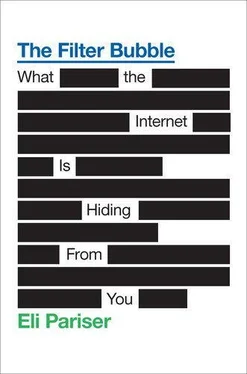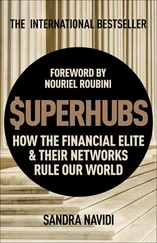Here’s one place to start: Stop being a mouse.
On an episode of the radio program This American Life, host Ira Glass investigates how to build a better mousetrap. He talks to Andy Woolworth, the man at the world’s largest mousetrap manufacturer who fields ideas for new trap designs. The proposed ideas vary from the impractical (a trap that submerges the mouse in antifreeze, which then needs to be thrown out by the bucket) to the creepy (a design that kills rodents using, yes, gas pellets).
But the punch line is that they’re all unnecessary. Woolworth has an easy job, because the existing traps are very cheap and work within a day 88 percent of the time. Mousetraps work because mice generally establish a food-seeking route within ten feet of where they are, returning to it up to thirty times a day. Place a trap in its vicinity, and chances are very good that you’ll catch your mouse.
Most of us are pretty mouselike in our information habits. I admittedly am: There are three or four Web sites that I check frequently each day, and I rarely vary them or add new ones to my repertoire. “Whether we live in Calcutta or San Francisco,” Matt Cohler told me, “we all kinda do the same thing over and over again most of the time. And jumping out of that recursion loop is not easy to do.” Habits are hard to break. But just as you notice more about the place you live when you take a new route to work, varying your path online dramatically increases your likelihood of encountering new ideas and people.
Just by stretching your interests in new directions, you give the personalizing code more breadth to work with. Someone who shows interest in opera and comic books and South African politics and Tom Cruise is harder to pigeonhole than someone who just shows interest in one of those things. And by constantly moving the flashlight of your attention to the perimeter of your understanding, you enlarge your sense of the world.
Going off the beaten track is scary at first, but the experiences we have when we come across new ideas, people, and cultures are powerful. They make us feel human. Serendipity is a shortcut to joy.
For some of the “identity cascade” problems discussed in chapter 5, regularly erasing the cookies your Internet browser uses to identify who you are is a partial cure. Most browsers these days make erasing cookies pretty simple—you just select Options or Preferences and then choose Erase cookies. And many personalized ad networks are offering consumers the option to opt out. I’m posting an updated and more detailed list of places to opt out on the Web site for this book, www.thefilterbubble.com.
But because personalization is more or less unavoidable, opting out entirely isn’t a particularly viable route for most of us. You can run all of your online activities in an “incognito” window, where less of your personal information is stored, but it’ll be increasingly impractical—many services simply won’t work the way they’re supposed to. (This is why, as I describe below, I don’t think the Do Not Track list currently under consideration by the FTC is a viable strategy.) And of course, Google personalizes based on your Internet address, location, and a number of other factors even if you’re entirely logged out and on a brand-new laptop.
A better approach is to choose to use sites that give users more control and visibility over how their filters work and how they use your personal information.
For example, consider the difference between Twitter and Facebook. In many ways, the two sites are very similar. They both offer people the opportunity to share blips of information and links to videos, news, and photographs. They both offer the opportunity to hear from the people you want to hear from and screen out the people you don’t.
But Twitter’s universe is based on a few very simple, mostly transparent rules—what one Twitter supporter called “a thin layer of regulation.” Unless you go out of your way to lock your account, everything you do is public to everyone. You can subscribe to anyone’s feed that you like without their permission, and then you see a time-ordered stream of updates that includes everything everyone you’re following says.
In comparison, the rules that govern Facebook’s information universe are maddeningly opaque and seem to change almost daily. If you post a status update, your friends may or may not see it, and you may or may not see theirs. (This is true even in the Most Recent view that many users assume shows all of the updates—it doesn’t.) Different types of content are likely to show up at different rates—if you post a video, for example, it’s more likely to be seen by your friends than a status update. And the information you share with the site itself is private one day and public the next. There’s no excuse, for example, for asking users to declare which Web sites they’re “fans” of with the promise that it’ll be shown only to their friends, and then releasing that information to the world, as Facebook did in 2009.
Because Twitter operates on the basis of a few simple, easily understandable rules, it’s also less susceptible to what venture capitalist Brad Burnham (whose Union Square Ventures was Twitter’s primary early investor) calls the tyranny of the default. There’s great power in setting the default option when people are given a choice. Dan Ariely, the behavioral economist, illustrates the principle with a chart showing organ donation rates in different European countries. In England, the Netherlands, and Austria, the rates hover around 10 percent to 15 percent, but in France, Germany, and Belgium, donation rates are in the high 90s. Why? In the first set of countries, you have to check a box giving permission for your organs to be donated. In the second, you have to check a box to say you won’t give permission.
If people will let defaults determine the fate of our friends who need lungs and hearts, we’ll certainly let them determine how we share information a lot of the time. That’s not because we’re stupid. It’s because we’re busy, have limited attention with which to make decisions, and generally trust that if everyone else is doing something, it’s OK for us to do it too. But this trust is often misplaced. Facebook has wielded this power with great intentionality—shifting the defaults on privacy settings in order to encourage masses of people to make their posts more public. And because software architects clearly understand the power of the default and use it to make their services more profitable, their claim that users can opt out of giving their personal information seems somewhat disingenuous. With fewer rules and a more transparent system, there are fewer defaults to set.
Facebook’s PR department didn’t return my e-mails requesting an interview (perhaps because MoveOn’s critical view of Facebook’s privacy practices is well known). But it would probably argue that it gives its users far more choice and control about how they use the service than Twitter does. And it’s true that Facebook’s options control panel lists scores of different options for Facebook users.
But to give people control, you have to make clearly evident what the options are, because options largely exist only to the degree that they’re perceived. This is the problem many of us used to face in programming our VCRs: The devices had all sorts of functions, but figuring out how to make them do anything was an afternoon-long exercise in frustration. When it comes to important tasks like protecting your privacy and adjusting your filters online, saying that you can figure it out if you read the manual for long enough isn’t a sufficient answer.
In short, at the time of this writing, Twitter makes it pretty straightforward to manage your filter and understand what’s showing up and why, whereas Facebook makes it nearly impossible. All other things being equal, if you’re concerned about having control over your filter bubble, better to use services like Twitter than services like Facebook.
Читать дальше











